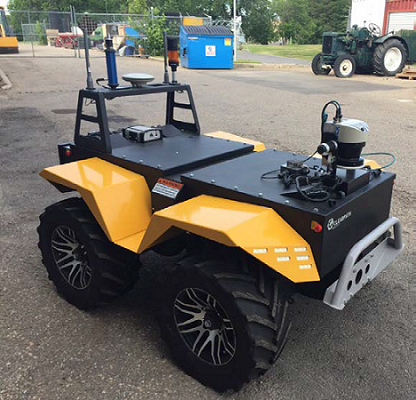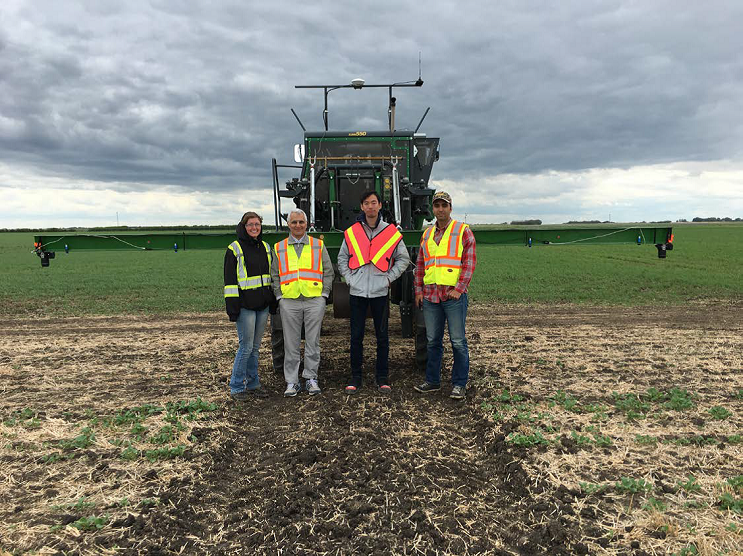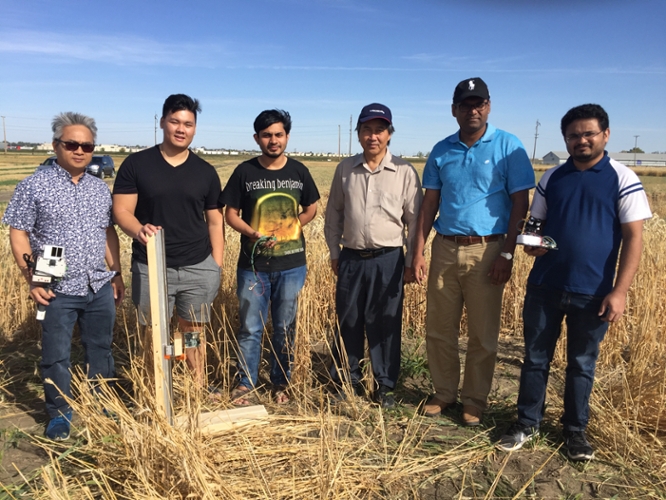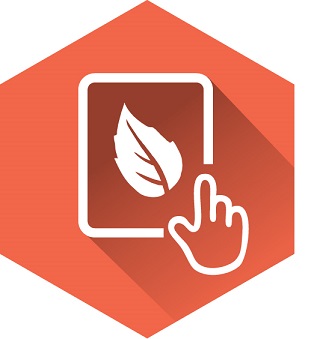Project Goal
To develop a high-throughput mobile platform for rapid assessment of plant traits.
Project Summary
The heart of plant biology is about understanding the link between genetic differences in plants and phenotypes or plant traits. While genotyping plants is now relatively low-cost and high-throughput, phenotyping is still labour-intensive and restrictive to plant biology studies and crop improvement research. To combat this, platforms for measuring high-throughput phenotyping are needed.

Project Results to Date
Reza Fotouhi and his team of researchers are developing a vehicle and eventually an autonomous robot that will move through the field and collect data, primarily on wheat, canola, and lentils. Currently, this platform is semi-autonomous and GPS-controlled, but controlled by a driver. The next phase of this project will include the creation of a wheeled mobile robot that is completely autonomous, controlled by a computer and monitored by humans.
The robot will utilize a GPS for self-navigation, with attached robotic arms to hold sensors, take pictures, and collect other data to monitor crop health. Another team of researchers within this project are working to develop custom and sophisticated sensors for the robot to better monitor important crop features such as height, moisture content, vigor (ground cover or leaf area index), days to flower, biomass for root and shoot, canopy temperature, and canopy structure. Monitoring heat stress, drought stress, and disease response are also other important characteristics which will be monitored.
The mobile platform and its sensors provide a fast, accurate, and location-independent method of bringing the appropriate visualization technologies to targeted crops. It will also integrate real-time imaging and video processing. All of these features will increase the accuracy of data collected and the overall number of traits that can be quantified for field-grown plants. Data related to selected traits can also be collected on a regular basis, such as every 7-10 days or as necessary. This means that unique digital signatures with time correlation can be extracted from the data.


Khan Wahid and Anh Dinh are working with their team to develop a front-end system capable of high-throughput data acquision. This is built on a reconfigurable platform for field plots and capable of integrating multiple imaging and non-imaging sensors, and data compression and wireless streaming to the central server.
The group is also developing a next generation hybrid sensor to better characterize traits in canola and wheat. Along with above ground and underground sensors, the system integrates environmental sensors to study the correlation of the plant's phenological development. These sensors include but are not limited to: ground and air temperature, air humidity, sunlight, carbon dioxide, wind speed, wind direction, leaf wetness, soil water content, soil density, soil nutrition and mineral content, etc. The hybrid system integrates data from a non-destructive technique called electrical impedance spectroscopy (EIS) to model wheat shoot and root biomass under different stress conditions.

Practical Applications
- This project will result in crop improvements based on the ability to detect the linkage between genotype and phenotype. Other relevant applications include management variability, the ability to monitor crop response to soil, and correcting crop management and its variable inputs to improve yield and economic efficiency - also known as precision agriculture.
- This project has strong real-world applications for breeders and researchers in the development of digital phenotyping, as well as supporting and validating manual phenotyping. The robotic vehicle makes data collection efficient, quick, precise, advanced, and adaptable to different environmental scenarios. Researchers also have access to more environmental and field data, and improved data acquisition. Breeders can monitor traits that are impractical to do manually in a time-sensitive manner, such as transpiration, photosynthesis, heat stress, and drought stress.
- This technology comes with the opportunity for future patents and commercialization. It can be used to achieve precision phenotypes in crop plants. This will ultimately improve productivity of Saskatchewan farms, and reduce the cost of crop research and breeding.
Collaborations
Project 2.2 is also working in collaboration with the following P2IRC projects:
- Project 1.2: Crop Phenometrics Platform: Leveraging Field Phenomics for Advancing Key Rotational Crops, which is a similar project focused on mobile vehicle imaging. These two projects monitor progress and share information in order to advance their individual technological development. The platform used in Project 2.2 is different from 1.2 because the robotic vehicle is autonomous, smaller, and has better mobility and maneuverability. The robot is optimized for specific data gathering requirements for each individual crop.
- Various projects throughout Theme 3: Computational Informatics of Crop Phenotype Data. Theme 3 assists Project 2.2 in information analysis and software development.
Research Team
Loading...
co-Project Investigators:
Aryan Saadat Mehr
Pierre Hucl
Khan Wahid
Anh Dinh
Pankaj Bhowmik
Research Associates:
Rahim Oragi
MSc Students:
Mostafa Bayati
Qianwei Zhang
Karim Panjvani
Thomas Truong
Hong Cao
Monzurul Islam


